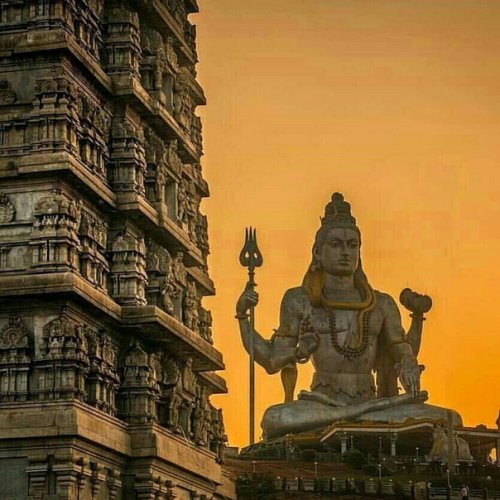
An important evidence of the cultural level of the Indus civilization is the presence of writing. Inscriptions have been preserved on ceramics, on metal objects and mainly on seals. And we don’t know enough about the art of this civilization.
Sculpting was at a high level; Finds of bronze and stone figurines allow us to confirm this. Jewelry and toys made with great artistic taste testify not only to the skill of the workers, but also to the level of aesthetic needs of the population.
There is relatively little data on religious beliefs. Based on the discovery of a large number of female terracotta figurines, the existence of a cult of the mother goddess is assumed. This is quite likely, since such a cult remains very strong in modern India. The three-faced deity surrounded by animals, depicted on some Indus seals, resembles the later god Shiva in the form of Pashupati - “Lord of Cattle”.
Excavations of burial grounds provide some insight into funeral rites. There was no strict uniformity; Most often, burial was carried out directly in the ground, sometimes household items were placed with the deceased.
This is the information that has reached us. No burial structures in any way similar to those of ancient Egypt have survived. Is there one building that could confidently be considered a temple or chapel? This markedly distinguishes the Indus civilization from the great contemporaneous civilizations in Mesopotamia and the Nile Valley, in whose cities religious buildings constitute the most important element.
From a very early time, it was in close historical and cultural contacts with many countries of the East and the ancient world. The achievements of Indian civilization had a significant impact on Arab and Iranian culture and science. Many ancient writers and philosophers sought to visit India to get acquainted with its original teachings about the universe and the place of man in it. Religion played a major role in the spiritual life of Ancient India. The main religious movement was Hinduism (more than 80% of the Indian population now follows it); The roots of this religion go back to ancient times. Philosophy, literature, and theater developed. The architectural structures were wooden and have not survived. There were schools of sculpture and iconography. The most famous monument of ancient Indian painting are wall paintings. The successes of the ancient Indians in mathematics, astronomy, medicine, and linguistics were impressive. Their scientific achievements had a significant impact on the culture of other peoples, but they especially influenced the development of Arab and Iranian-Persian science; The discoveries made by the Indians anticipated much of what modern European science later came to. The name of Aryabhata (5th - early 6th century AD) occupies an honorable place in the history of world mathematics and astronomy. The Indian scientist knew the value of the number π, and he proposed an original solution to the linear equation, which is close to modern methods of mathematics. Ancient Indian treatises on astronomy indicate a high level of astronomical knowledge, which was constantly improved. Regardless of ancient science, Aryabhata made a guess about the rotation of the Earth around its axis. Ayurveda (the science of longevity), which originated here in ancient times, is still held in high esteem in India. Ancient Indian doctors studied the properties of herbs, the influence of climate on human health, and paid considerable attention to personal hygiene and diet. Surgery was at a high level: ancient Indian medical treatises of the first centuries AD mention 300 different operations and 120 surgical instruments. Tibetan medicine, popular today in the West, is based on the traditions of ancient Indian Ayurveda. The ancient civilization of India differs from the civilizations of Egypt, Mesopotamia and Greece in that its traditions have been continuously preserved to this day. Before the archaeological excavations, the peasants of Egypt or Iraq knew nothing of the culture of their ancestors, and their Greek counterparts most likely had only a vague idea of \u200b\u200bthe glory of Athens in the time of Pericles. The situation was different in India. The first Europeans to visit this country met inhabitants who were aware of the antiquity of their culture, even exaggerating it and declaring that over the course of thousands of years it had not undergone major changes. Legends that are still known to the average Indian mention the names of mythical leaders who lived a thousand years BC, and orthodox Brahmins still repeat hymns composed even earlier during daily prayers.In fact, India is a country with the oldest continuous cultural traditions in the world.
